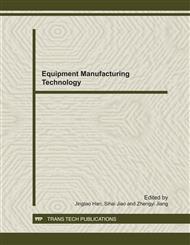p.424
p.430
p.434
p.438
p.443
p.448
p.452
p.462
p.466
The Comparison Investigation of OMA Methods on Time Domain
Abstract:
Operational modal analysis (OMA) is an effective method to identify structural modal parameters from response signal under operational condition. Aiming at the evaluation of different time domain OMA methods in structural modal parameters identification, both numerical simulation and experimental investigation of cantilever beam have been applied to different methods, such as Sparse Time Domain (STD) method, Least Square Complex Exponential (LSCE) method and Eigensystem Realization Algorithm (ERA), etc. The comparison results indicated that ERA is the best one, LSCE method follows and STD method is worst.
Info:
Periodical:
Pages:
443-447
Citation:
Online since:
December 2011
Authors:
Price:
Сopyright:
© 2012 Trans Tech Publications Ltd. All Rights Reserved
Share:
Citation:


